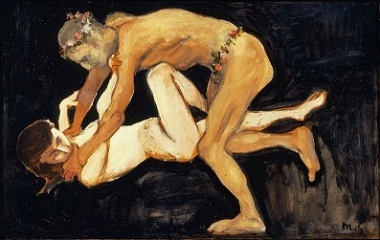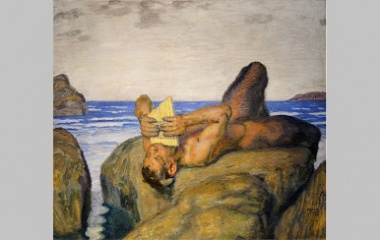Rustic music twines through the tree branches of ancient Greece, the kind of music that makes men forget their worries and women fall in love. Fauns pipe this music through the trees, and they are just as carefree and romantic as their own songs.
What is a Faun?
Fauns are mythical creatures with both human and goat features. They are notorious for their love of the forest, music, and beautiful women, and they are generally charming to the people they encounter as they trot along their happy, woodland paths.
Characteristics
Physical Description
Fauns are a peculiar, chimeric race: half goat, half human. With horns, hairy legs, hooves, and a twitchy tail, they might not sound like the loveliest characters, but they have their own undeniable charm. You can’t help but love their faces, which combine pointy ears and a head full of woolly curls with youthful features, sparkling eyes, and a roguish smile.
Above the waist, these woodland creatures have handsome male bodies with lithe limbs. Below the waist, they have two goat legs, which make them extremely nimble dancers. While they’re not especially fond of clothing, they like to adorn themselves with crowns of leaves and berries from their woodland home, especially before one of their legendary parties.
Special Abilities
Fauns are merry creatures, and they have a talent for brightening the hearts of others. If you are waylaid by a group of them, you can be sure that you’re not going to get away any time soon. The little creatures will lure you into their festivities with their dancing, jokes, and delicious food.
Of course, they are best known for their flute playing. With just a small, wooden flute, they can hypnotize you with fantastic melodies. Hardly anyone can resist a Faun with a flute, and in truth, the power of their flutes has led some of them to act up, luring travelers into the forest, where they get lost, or stealing the hearts of beautiful maidens away from the rest of the world.
Related Characters
In Greek culture, Fauns are associated with Pan, the god of shepherds, mountain wilds, meadowlands, wooded groves, fertility, and rustic music. They join Pan in his merrymaking and act as his servants when he needs aid. In return, Pan has gifted them with his trademark musical instrument, the pan-flute. Like many Greek gods, Pan was eventually handed down into Roman culture under a new name, Faunus. His troop of Fauns made this transition with him.
Fauns and satyrs are commonly confused because they have some striking similarities in appearance and personality. However, they are separate creatures. Satyrs are followers of Dionysus, the god of harvest, wine-making, and ecstasy. Like Fauns, they love music, women, and parties, but they are far less innocent than their light-hearted cousins. Satyrs are crafty creatures, and they can be downright destructive when they are bent on enjoying themselves, no matter the cost. They are also less physically charming than their woodland cousins. Their faces are less human, and their lower bodies are mightier, more like a horse or a donkey than a harmless, furry goat.
Cultural Representation
Greek and Roman Mythology
Fauns were popular characters in both Greek and Roman mythology. They are mentioned in ancient texts that describe the gods’ grandest parties, and they are frequently written into the entourage of lovers who pursue nymphs. For example, they follow in the march of Bacchus, a half-god who wandered the earth teaching men how to cultivate vineyards before making a glorious march home to Greece, and in the myth of Vertumnus and Pomona, they are competitors against Vertumnus for the beautiful Pomona’s heart.
During the Hellenistic period, the mythical revelers became popular models for statues. In some of these statues, they were portrayed without any goat-like features, appearing as soft, romantic young men with flutes or beautiful women. The most famous of these statues is the Barberini Faun, which shows a young, handsome man exhausted after a long party.
Romantic Period
Fauns were revitalized during the Romantic period, when fairytales gained wild popularity. They were separated from the old Gods of Greek and Roman mythology and became independent, magical creatures of the forest.
One of the Romantic period’s most famous authors, Nathaniel Hawthorne, nodded to the mythical creatures with his acclaimed novelThe Marble Faun, while poet Stephane Mallarme composed a masterpiece around the charming chimera with “L’apres-midi d’un Faune.” This poem later inspired both a symphony composition and a ballet.
Modern Appearances
Remarkably, Fauns have changed very little from their early Greek play-days to their appearances in modern literature. Although they seem to have gotten out from under Pan’s thumb, they still have the same rustically charming appearance, fun-loving temper, and musical talent.
Today’s most famous Faun is Mr. Tumnus, a flute-playing creature who welcomes Lucy Pevensie to the world of Narnia. Mr. Tumnus captures an age-old personality, acting both as an agent of mischief and as a kind-hearted guide for Lucy, the human girl who has captured his fancy.











What was the role of fauns in Roman mythology, in detail? I am reading a book and want to know more about what the fauns did to play a role in Roman mythology.